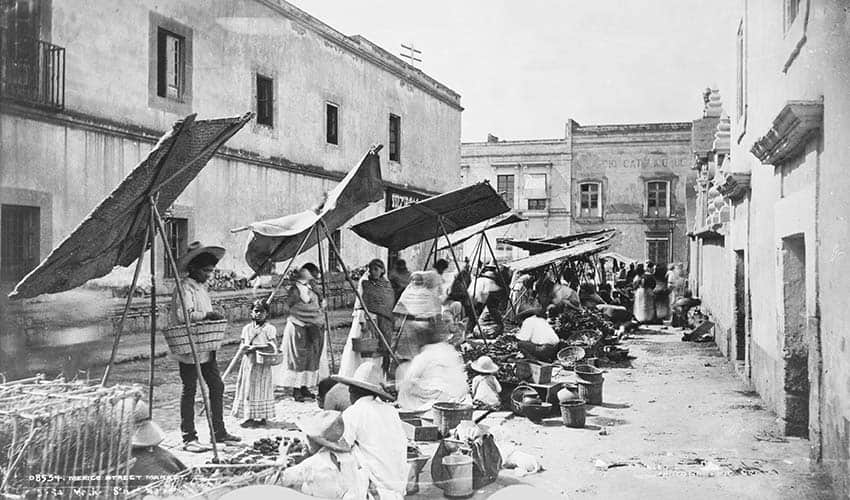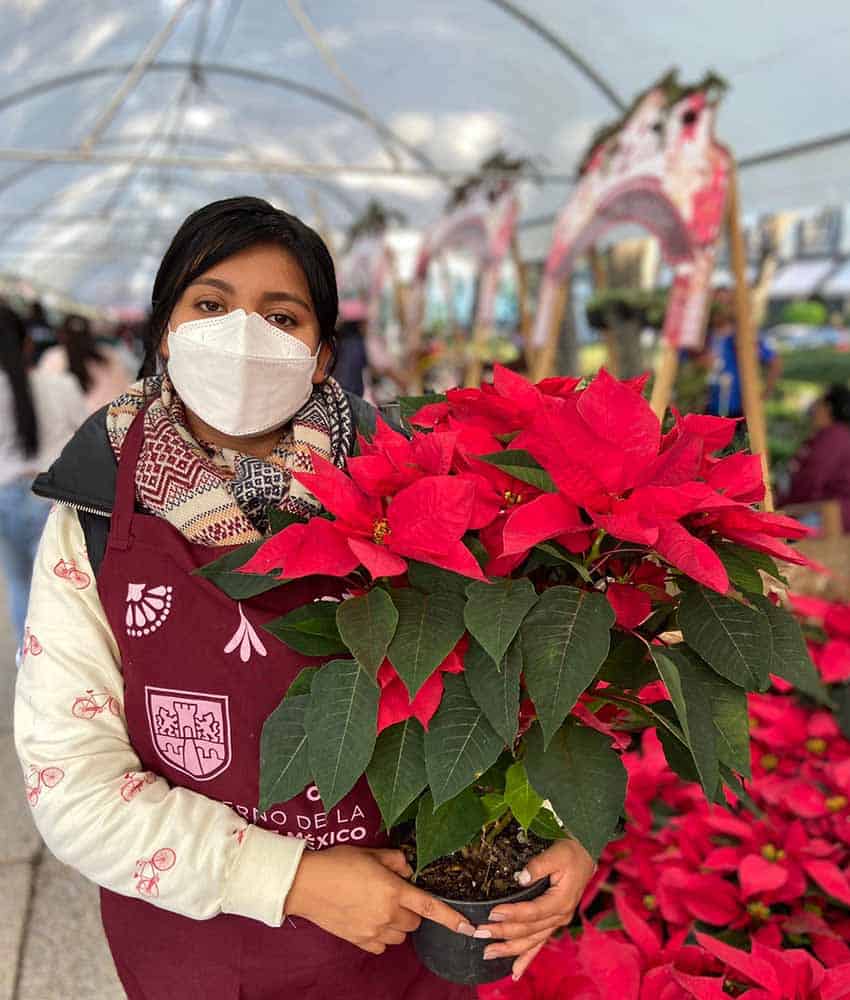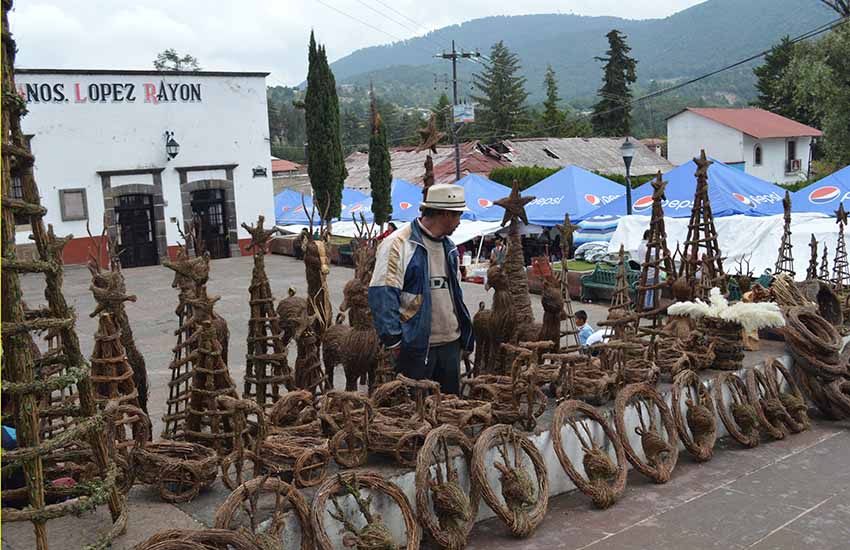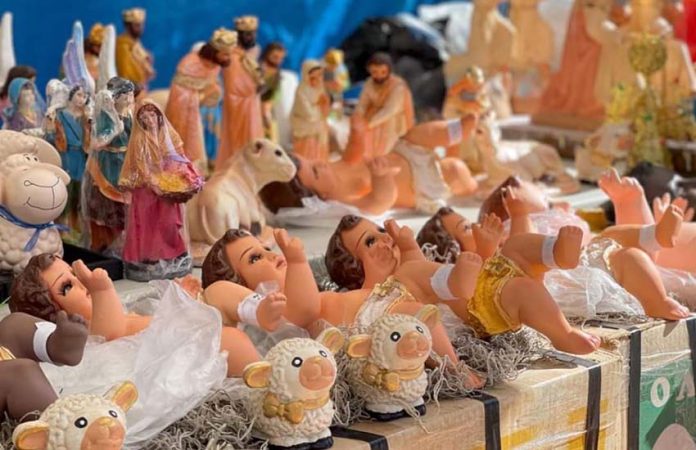Love them or hate them, if you have lived in Mexico long enough, you have encountered the chaos of a tianguis, especially now during the Christmas season.
The word generally gets translated into English as “flea market” or “bazaar.” Coming from Nahuatl, it originally just meant “market,” since during the Mesoamerican era, just about all buying and selling happened in public plazas and streets.
Over time, the word’s meaning narrowed to indicate an itinerant street market that appears on certain days of the week or year.
Weekly tianguis tend to focus on people’s basic needs, but annual ones are dedicated to the special products for big holidays such as Day of the Dead and even Mexico’s Independence Day. But by far, the most important seasonal tianguis are those associated with Christmas.

Found in just about every Mexican city, their appearance indicates that it is time to get ready for the weeks of get-togethers and other events that dominate life in Mexico from Dec. 12 — the feast day of Our Lady of Guadalupe) to Jan. 6 (Epiphany).
Most of these Christmas markets are set up adjacent to year-round municipal markets, extending the normal mercantile zone for blocks outwards. Larger ones will have hundreds of stands, and just about all tianguis will have more irregular stands and wandering vendors than those with official permits.
Streets and sidewalks are narrowed, even blocked, snarling traffic in the area for both cars and pedestrians. This is especially true in the days before Christmas and Epiphany, when people make last-minute purchases.
Cities often have authorized dates for the market, running from mid-November or the beginning of December until Dec. 24 or until just after Epiphany. Although supermarkets and department stores have begun to follow the United States custom of putting out Christmas decorations as early as August, this is not the case for the Christmas tianguis, which waits until the very important Day of the Dead passes.
Most of the decorative merchandise in these markets will be recognizable to Westerners.
The most traditional are small houses and accessories to set up Nativity scenes, which are still a focal point in Mexican homes at Christmas. The little houses are populated with handcrafted or mass-produced angels, the Holy Family and animals, but one unusual twist is the large, sometimes life-sized, images of the infant Jesus. These have special roles to play on Christmas Eve, Epiphany and Candlemas (Feb. 2).
Perhaps the most visible items in tianguis, especially in larger cities, are Christmas trees, lights and ornaments, which have been gaining popularity since they were introduced in the mid-20th century. Other common items include advent candle holders, poinsettias and wreaths.
Mexico does produce Christmas decorations, especially in Tlalpujahua, Michoacán, and Chignahuapan, Puebla, but imported Asian products are common too, so check the packaging.

Handcrafted items are relatively hard to find; you need to look either in more rural markets or in tianguis that promote them — these items generally cost too much for most peso-conscious Mexicans.
Mexico also produces live Christmas trees, and most of the ones you see in a tianguis will be domestic since they are cheaper. Items that may seem unusual are hay and moss, which are placed around nativity scenes. I recommend avoiding the moss, as it is often unsustainably stripped from forests.
Christmas tianguis also contain a large number of stalls selling clothing, toys and much more. Vendors take advantage of the fact that people are shopping for gifts and that those with formal employment receive a Christmas bonus in the middle of December, known as the aguinaldo.
The Christmas tianguis is also a great place to try out street food. Many sell tacos to feed hungry shoppers, but there are also seasonal specialties to be found such as tamales, atole (a sweetened hot drink made from a corn flour base), ponche (a hot fruit drink) and buñelos (fried sweet bread).
Interestingly, these tianguis generally do not sell ingredients for the Christmas season’s special meals, e.g. turkeys, romeritos (a type of green, leafy vegetable) and seasonal fruits. But these items are available in the year-round market..

Even if your city doesn’t have a dedicated Christmas tianguis, just about every year-round tianguis in Mexico sets up at least a few stalls for holiday-themed vendors.
A number of cities have notable Christmas tianguis:
- In Mexico City, the huge Central de Abastos in the Itzapalapa borough and the Mercado Hidalgo in the Doctores neighborhood have popular Christmas tianguis.
- The fireworks markets in Tultepec, Mexico state, north of the Mexico City metro area, also becomes a Christmas tianguis during the holidays.
- Guadalajara has about 20 Christmas tianguis, including those at the San Juan de Díos market and at Refugio Park.
- The city of Querétaro has a large Christmas tianguis every year downtown at the La Cruz open-air market.
- La Paz, Baja California Sur’s downtown area sets up a dedicated Christmas tianguis every year at the beginning of December.
- Mérida, Yucatán, has a tianguis that promotes Yucatán handcrafts.
Tianguis are still an important part of Mexico’s economy year-round, especially for the lower classes. They not only provide merchandise at lower prices, they provide needed income and employment that the formal economy cannot provide.
Unsurprisingly, Mexico’s efforts to “clean up” or eliminate them over the centuries has had mixed results at best.
Leigh Thelmadatter arrived in Mexico 18 years ago and fell in love with the land and the culture in particular its handcrafts and art. She is the author of Mexican Cartonería: Paper, Paste and Fiesta (Schiffer 2019). Her culture column appears regularly on Mexico News Daily.
